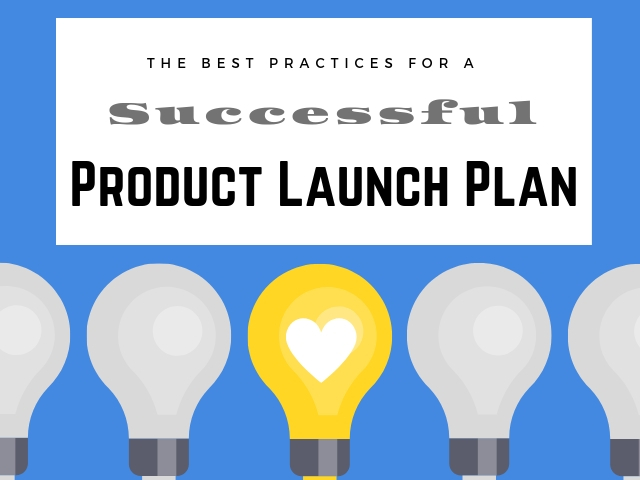
Launching a new product is an exciting endeavor that requires careful planning and execution.
A well-structured product launch plan is crucial to maximize your chances of success and create a buzz around your offering.
In this comprehensive guide, we will walk you through the essential steps and strategies to create a winning product launch plan.
The Importance of a Product Launch Plan
A product launch plan serves as a roadmap for introducing your new product to the market. And to ensure a successful product launch, create a marketing plan that will serve as a foundation of your product promotion strategy.
It outlines the necessary steps, resources, and timelines required to achieve your launch objectives.
By having a well-defined plan in place, you can minimize risks, align your team, and create a memorable launch experience for your target audience.
Creating an Effective Product Launch Plan

1. Setting Clear Objectives and Goals
Before diving into the details of your product launch plan, it’s crucial to define clear objectives and goals. What do you aim to achieve with this launch?
Are you looking to generate buzz, drive sales, or increase brand awareness?
By setting specific, measurable, attainable, relevant, and time-bound (SMART) goals, you can align your efforts and measure the success of your launch.
2. Conducting Market Research
Understanding your target market is paramount to the success of your product launch.
Through comprehensive market research, you can identify your audience’s needs, preferences, and pain points.
This information will help you tailor your messaging and positioning to resonate with your potential customers effectively.
3. Crafting a Compelling Value Proposition
Your value proposition is the unique selling point that differentiates your product from competitors.
Clearly articulate how your product solves a problem or fulfills a need better than existing alternatives.
A strong value proposition will captivate your audience and convince them that your product is the right choice for them.
4. Developing a Marketing Strategy
To generate buzz and anticipation around your product, you need a well-rounded marketing strategy.
Utilize a mix of online and offline channels to reach your target audience effectively.
Consider leveraging social media platforms, email marketing, content marketing, influencer collaborations, and traditional advertising methods.
Tailor your messaging to each channel, keeping the unique characteristics and preferences of your audience in mind.
5. Creating a Launch Timeline
A launch timeline is a detailed schedule that outlines all the activities and milestones leading up to the launch day.
Break down the tasks into manageable chunks and assign responsibilities to team members.
According to Smart Insights, When developing your timeline, consider how you can work with potential influencers early on.
A well-structured timeline ensures everyone is on the same page and helps you stay organized throughout the launch process.
6. Building Anticipation with Teasers and Pre-launch Campaigns
Creating a sense of anticipation is key to a successful product launch.
Use teasers and pre-launch campaigns to build excitement and generate interest among your target audience.
Offer exclusive sneak peeks, behind-the-scenes content, or limited-time promotions to create a buzz and encourage early adopters.
7. Setting up Tracking and Analytics
To measure the success of your product launch, it’s important to have proper tracking and analytics in place.
Implement tools such as Google Analytics to monitor website traffic, conversions, and user behavior.
By analyzing data, you can make data-driven decisions and optimize your marketing efforts for better results.
8. Training Your Sales Team
Your sales team plays a critical role in the success of your product launch.
Provide them with comprehensive training on your product’s features, benefits, and target audience.
Equip them with sales tools, product knowledge resources, and competitive insights to effectively communicate the value of your offering to potential customers.
9. Testing and Quality Assurance
Before the official launch, it’s crucial to conduct thorough testing and quality assurance to ensure your product functions as intended.
Test all features, check for bugs or glitches, and gather feedback from beta users.
Address any issues that arise promptly to deliver a seamless user experience.
10. Garnering Feedback and Reviews
Once your product is launched, encourage customers to provide feedback and leave reviews.
Positive reviews and testimonials can boost your credibility and encourage others to try your product.
Actively engage with customers, address their concerns, and continuously improve your offering based on their feedback.
FAQs about Product Launch Plan
1. What are the key components of a product launch plan?
A product launch plan typically includes setting objectives, conducting market research, developing a marketing strategy, creating a launch timeline, building anticipation, tracking analytics, training the sales team, testing and quality assurance, and garnering feedback and reviews.
2. How long should a product launch plan be?
The length of a product launch plan may vary depending on the complexity of the product and the scope of the launch.
However, it’s important to keep it concise and focused, providing all necessary information without overwhelming the readers.
3. What role does market research play in a product launch plan?
Market research helps you understand your target audience’s needs, preferences, and pain points.
This information allows you to tailor your messaging, positioning, and marketing strategies to effectively reach and engage your potential customers.
4. How can I build anticipation for my product launch?
Building anticipation can be achieved through teasers, pre-launch campaigns, exclusive sneak peeks, behind-the-scenes content, limited-time promotions, and engaging with your audience through social media platforms and email marketing.
5. Why is training the sales team important in a product launch plan?
The sales team is responsible for communicating the value of your product to potential customers.
Training them on product features, benefits, target audience, and competitive insights enables them to effectively sell and answer customer questions, ultimately driving sales.
6. How can I gather feedback and reviews for my product?
You can encourage customers to provide feedback and leave reviews through email follow-ups, social media engagement, and incentives such as discounts or exclusive access.
Actively address customer concerns and continuously improve your product based on their feedback.
Conclusion
A well-executed product launch plan is the foundation for a successful launch.
By setting clear objectives, conducting thorough market research, crafting a compelling value proposition, and implementing a comprehensive marketing strategy, you can maximize your chances of achieving your launch goals.
Remember to involve your sales team, gather feedback, and continuously improve your offering based on customer insights.
With careful planning and execution, your product launch can make a significant impact in the market.





